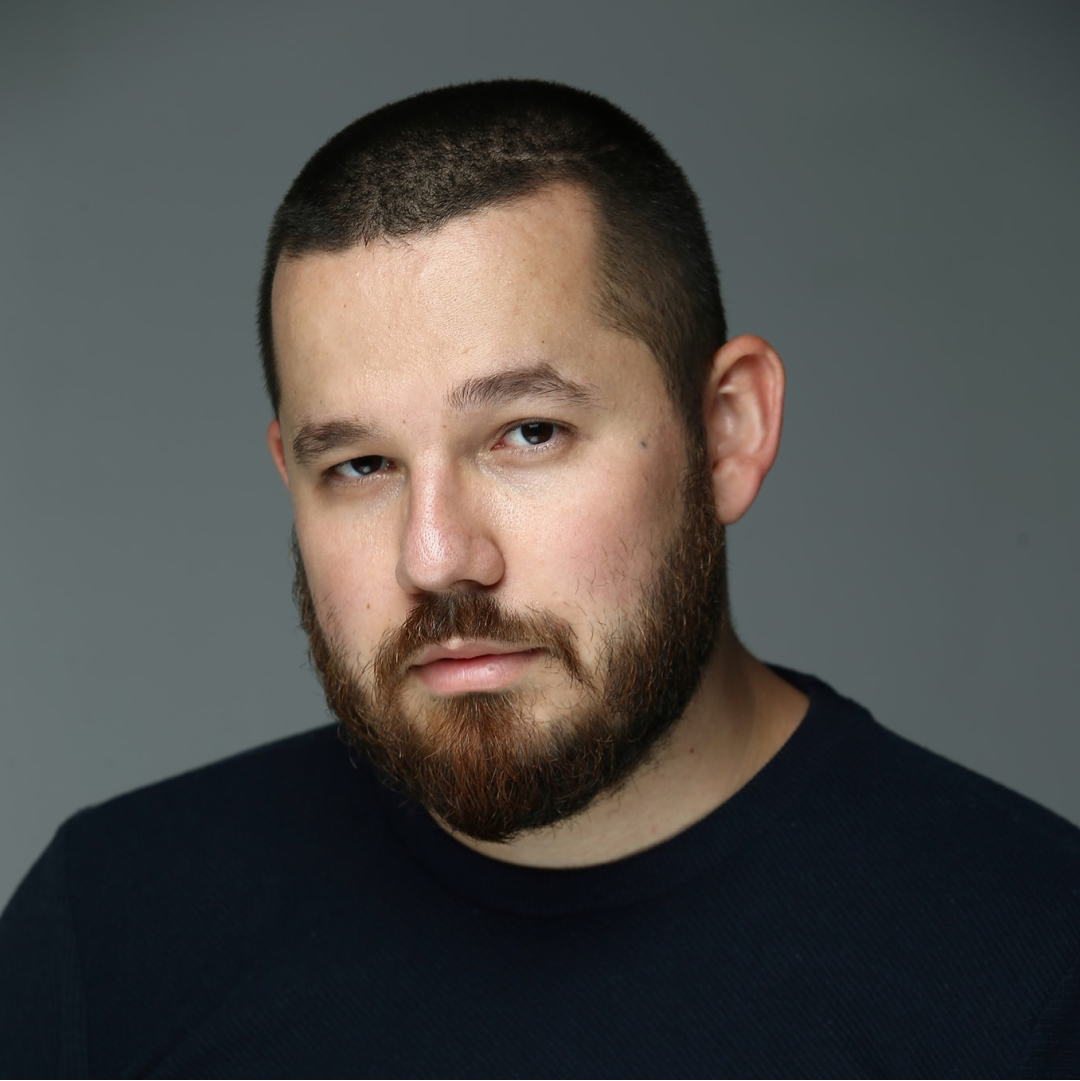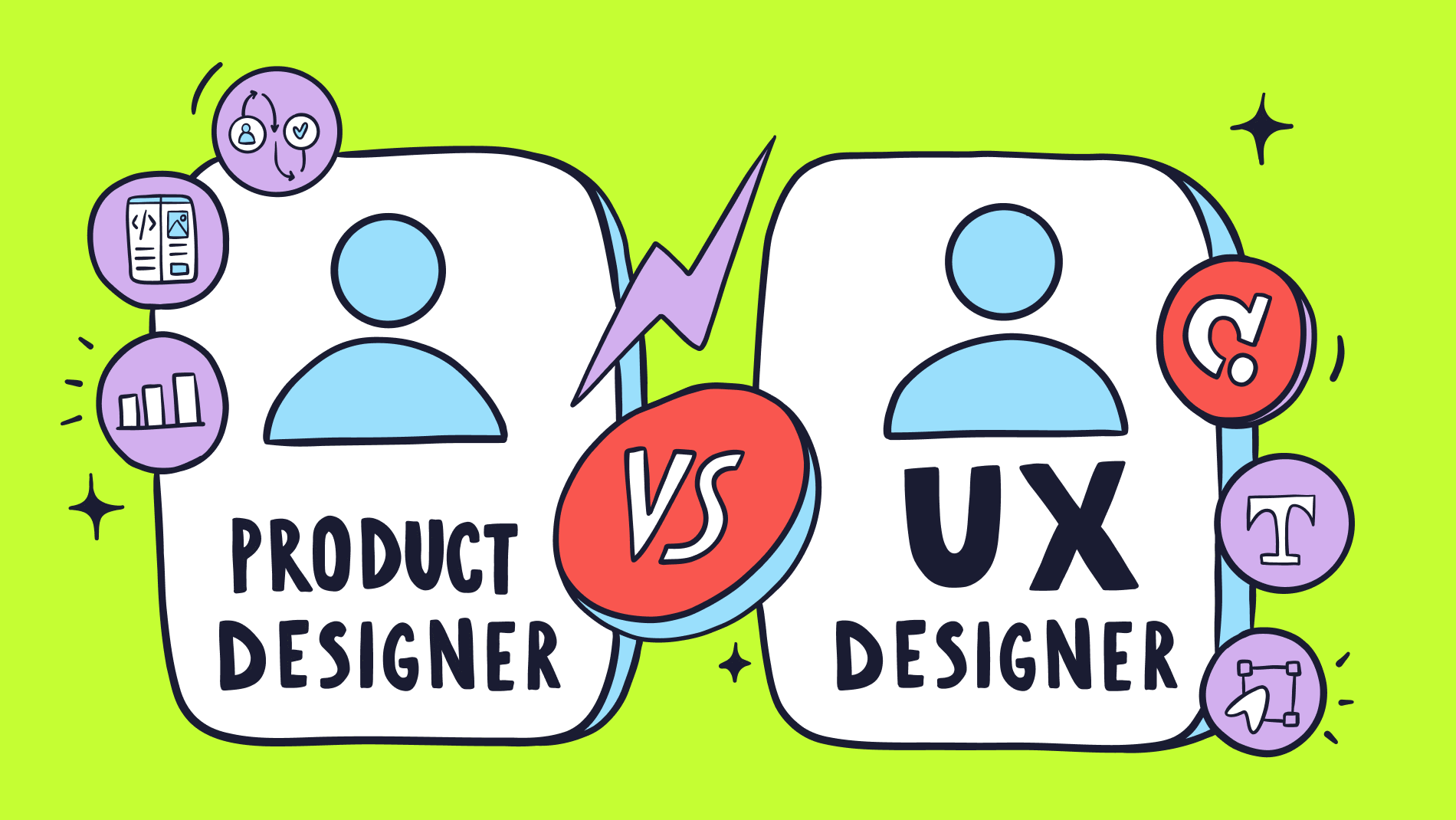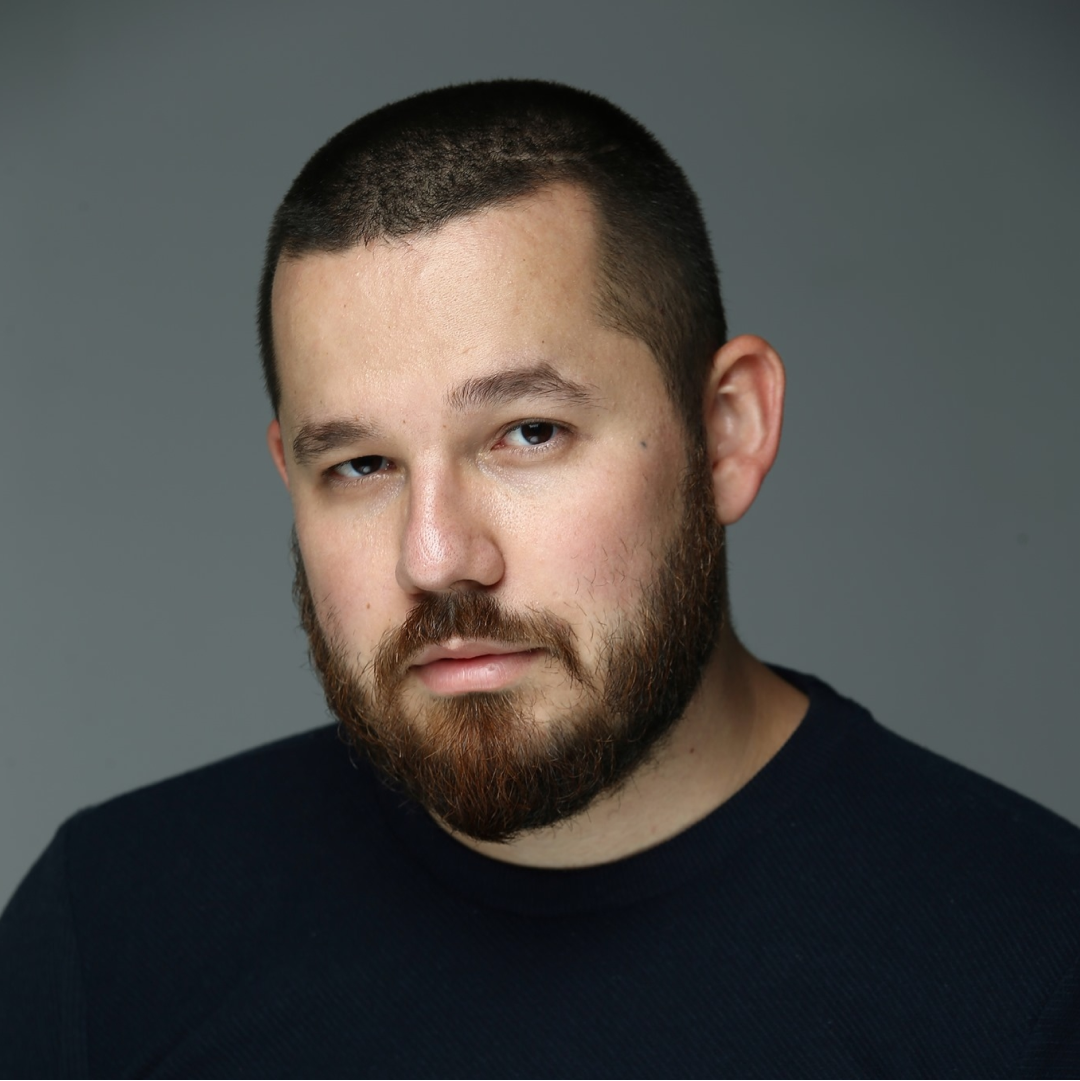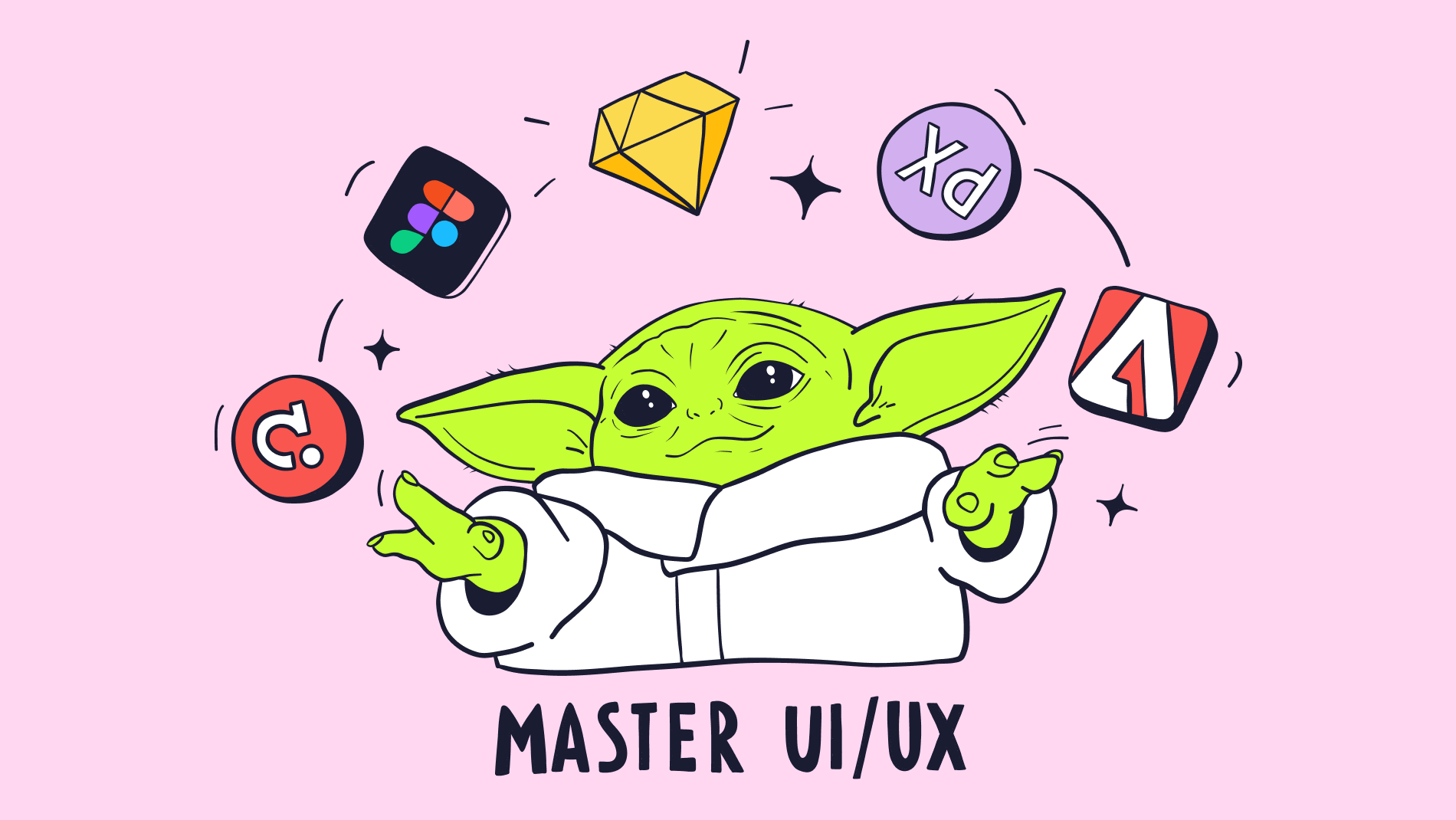What is product design and UX design: key differences and similarities
The field of design is evolving, so different directions and branches have emerged. Because of this, many people do not understand the difference between product design and UX-design. People often have a wrong first impression, so let's put everything in its place and understand the main points.
What is product design?
Product design is the process of creating and developing a new or improving an existing product. It involves combining aesthetics, functionality and usability to create a product so that it meets the needs and wants of users. The goal is to create a well-demanded product that people will enjoy using.
When designing a product, designers work on different aspects such as the appearance of the product, its features and functions, the materials used and the method of production. The user experience, market demand and the intended purpose of the product are all taken into account.
Product development often begins with research and analysis to understand user needs and identify opportunities for improvement. Designers then generate ideas and concepts, create prototypes to test and refine their designs, and finally develop detailed specifications for production.
Good product design considers not only the visual appeal but also the user's interaction with the product. It aims to create an easy and pleasant experience for the user, to make the product easy to use and understand.
The essence of product design is to create a product that not only looks good visually, but is functional, user-friendly and meets market requirements. It takes a combination of creativity, problem solving and a deep understanding of user needs to bring innovative and successful products to life.
Some of the questions that product designers answer are:
- Does this product solve an existing problem in the market?
- Is there a market opportunity for this product?
- How can we make this product cost effective?
- What will this product look like in two years?
- Does this product meet the short-term goals and long-term vision of the business?
What is UX design?
UX design aims to create products or services that provide a positive and meaningful experience for users. It involves understanding users' needs, goals, behaviours and preferences to create intuitive and enjoyable interactions. Its main goal is to ensure that users can easily and efficiently complete tasks and achieve goals when using a product or service.
The UX design process usually begins with user research, which involves gathering information about the target audience through methods such as interviews, surveys, and observations. This research helps designers understand user behaviour, motivations and pain points.
UX designers work on information architecture, which involves organising and structuring the content and functionality of the product. This step allows users to easily find what they need and navigate the product seamlessly.
Throughout the design process, UX designers conduct usability testing and gather feedback to iteratively improve the product. This includes observing users as they interact with the product and identifying areas for improvement.
In general, UX design aims to create products and services that are user-centred, intuitive and enjoyable to use. It involves understanding user needs, designing intuitive interfaces, and continually iterating to improve the overall user experience.
Some of the questions that UX designers are answering:
- Как этот продукт сможет помочь пользователям?
- Полезна ли конкретная функция?
- Как сделать продукт более доступным для всех пользователей?
- Как сделать продукт более ценным и удобным для клиента?
| Comparative aspect | UX design | Product design |
| Roles of the designer | Develops products and features before going to market (in the development phase) | Manages, improves and develops the product throughout its lifecycle |
| Design approach | The process of user-centred design thinking | Takes into account both user needs and, business needs during research and design |
| Research | Digs deeper into users and their behaviour | Focuses on market and competitor research |
| Instruments | Predominantly uses tools for design and testing | Works with a variety of tools for design, development, marketing, and user testing |
| Testing | Conducts usability testing before launching a product or feature | Tests existing products to identify problems with usage and to identify business opportunities |
| Фокус | Уделяет внимание потребностям пользователей и поиску решений | Балансирует между фокусом на пользователе, ценностью и привлекательностью продукта |
| Навыки | UX specialist | Versatile individuals with expertise in design, marketing, data analysis, programming and user behaviour |
Misconceptions about the difference
Product design is the evolution of UX design. From this perspective, the field of UX design is evolving and growing into product design. Product design and UX design are related but different fields. It is incorrect to say that product design is just an evolution of UX Design. While UX design is focused on creating meaningful user experiences, product design encompasses a broader field. Both fields have their unique focus and contribute to the overall success of a product, but they address different aspects of the design process.
It's the same thing, but product design involves more elements. Many people think that UX designers focus solely on user needs, while product designers focus on the combination of business and user needs. This is a flawed judgement.
Product designer and UX designer: responsibilities, skills and salaries
What does a product designer do?
Product designers typically work with existing digital products. They perform many of the same tasks as UX designers, but focus more on existing product development, new feature development, and maintenance.
In addition, product designers work closely with sales and marketing teams to find opportunities to add value to the business through competitor, market and user research. They play an important role in ensuring that the digital product is relevant and competitive, evolving in line with market trends and consumer demands.
Instead of developing new elements and components, product designers usually create user interfaces based on an existing design system using a drag-and-drop styling tool. A general understanding of HTML, CSS, and JS can come in handy in a product designer's job.
Tasks and responsibilities found in the work of a product designer:
- Identify opportunities to create new products, services or features.
- Gather information and assess how the new product or function can be aligned with existing business objectives and customer demographics.
- Prepare and approve design specifications based on briefs received from internal and external stakeholders.
- Create product roadmaps.
- Create sketches and test functionality of prototypes.
- Improving the design of existing products and services.
- Collecting feedback from users.
- Share and present ideas and findings with stakeholders and partners.
- Set project schedules and deadlines.
- Plan development budgets.
- Ensure products are relevant and up-to-date.
- Define and manage product roadmaps.
- Create and implement product development strategies.
- Ensure product design and development meets budgetary constraints.
- Identify ways to increase market share, revenue and attract new users.
- Understand the design and development process and relevant constraints for product design.
- Working with sales and marketing teams.
- User experience design, visual design.
- Presenting ideas and specifications to UX designers, developers and other stakeholders.
- Working collaboratively with UX designers on user experience design.
- Usability testing.
Advantages and disadvantages of being a product designer
Benefits of working as a product designer:
- Holistic approach: Product designers have the opportunity to work on different aspects of a product, including its visual design, functionality and user experience. This allows them to take a holistic approach to design by considering the entire product ecosystem.
- Creative problem solving: Product designers are challenged to solve complex design problems. They have the freedom to think creatively and come up with innovative solutions that meet user needs and business goals.
- Collaborating with teams: Product designers often work closely with engineers, marketers and stakeholders from different departments. This collaborative environment allows for an interdisciplinary approach and fosters effective communication and teamwork.
- User-centricity: Product designers prioritise understanding user needs and creating intuitive and enjoyable experiences. They conduct user research, gather feedback, and repeat designs to ensure that the product meets user expectations.
- Business Impact: Product developers have a direct impact on the success of the product. They contribute to its market relevance, competitiveness and overall business growth by creating an attractive and user-friendly design.
Недостатки работы дизайнером продукта:
- Ограничения: Разработчикам продукта необходимо учитывать различные ограничения, такие как технические ограничения, бюджетные ограничения и временные ограничения. Сбалансировать эти ограничения, сохраняя при этом исключительный пользовательский опыт, может оказаться непростой задачей.
- Субъективность и обратная связь: Дизайн субъективен, и разработчики продукта часто сталкиваются с различными мнениями и отзывами заинтересованных сторон. Управление и учет обратной связи при сохранении целостности дизайна может быть непростой задачей.
- Итеративный процесс: Проектирование — это итеративный процесс, который включает в себя множество изменений. Разработчики продуктов должны быть открыты для обратной связи и быть готовы совершенствовать свои проекты на основе пользовательского тестирования и вклада заинтересованных сторон.
- Нехватка времени: Разработчики продуктов часто работают в сжатые сроки, особенно когда работают над запуском продукта или обновлениями. Эффективное управление временем и создание высококачественных дизайнов в установленные сроки может быть сопряжено с большим стрессом.
- Непрерывное обучение: Дизайн продукта — это быстро развивающаяся область, в которой регулярно появляются новые тенденции дизайна, инструменты и технологии. Быть в курсе событий и постоянно осваивать новые навыки и методологии может быть непросто, но необходимо для того, чтобы оставаться конкурентоспособным.
Важно отметить, что упомянутые выше преимущества и недостатки характерны не только для разработчиков продуктов, но и в некоторой степени применимы к UX-дизайнерам. Однако UX-дизайнеры уделяют особое внимание пользовательскому опыту, что отличает их от других и привносит дополнительные нюансы в их роль.
What does a UX designer do?
UX designers focus on solving usability problems and ensuring that products are logically consistent. They take an active role in early user and market research to identify and understand user problems and develop design solutions to address them. When it comes to a new product or feature, the UX designer is responsible for turning the concept into a working prototype, including the development of user interface elements and components.
UX designers study cognitive psychology and how it affects design and interaction to make digital products more enjoyable for customers and identify opportunities to drive business value. Sometimes, UX designers' tasks also include user interface design (UI design), which examines how customers interact with individual elements and components.
Tasks and responsibilities found in the work of a UX designer:
- Conduct early user, market and competitor research
- Collect quantitative data through product usage reports and analytics.
- Create and develop user personas, storyboards, flowcharts and task flows based on user research findings, and define user flows.
- Information Architecture Design.
- Designing and optimising user flows and navigation.
- User experience design, interaction design, visual design, user interface design
- Design of electronic circuits and layouts
- Prototyping - low-fidelity and high-fidelity
- Usability testing
- Creating user personas, empathy maps, journey maps.
- UX text writing
- Understand product design specifications and implement them.
- Collaborate with product designers, UI designers, user researchers, UX writers and product development teams.
- Provide feedback to stakeholders, developers, marketers and customer support.
- Create documentation and assets for design handover.
- Manage the design system.
- Work with product teams to develop new products and features.
Advantages and disadvantages of working as a UX designer
Benefits of working as a UX designer:
- User-centred approach: UX designers give priority to understanding users' needs, behaviours and motivations. They focus on creating an intuitive and meaningful interface that meets users' expectations and goals.
- Empathy and advocacy: UX designers advocate for users throughout the design process. They empathise with users' pain points, frustrations and goals and strive to create solutions that effectively meet their needs.
- Research and Insights: UX designers conduct user research, usability testing, and gather feedback to inform their design decisions. They use data and analytical information to create evidence-based designs based on user needs and preferences.
- Information architecture and interaction design: UX designers excel at structuring information and developing clear navigation and interaction flows. They ensure that users can easily find what they need and complete tasks efficiently.
- Collaborative environment: UX designers collaborate with cross-functional teams including product managers, developers, and visual designers. This collaboration ensures a holistic approach to design and promotes effective communication and teamwork.
Disadvantages of being a UX designer:
- Balancing user needs and business goals: UX designers have to strike a delicate balance between user needs and business goals. They need to consider both sides and find solutions that meet both user expectations and the organisation's goals.
- Managing stakeholder expectations: Stakeholders have to deal with different expectations and opinions from stakeholders who may have different priorities or limited understanding of UX design principles. Communicating the design rationale and aligning stakeholder interests can be challenging.
- Iterative Process: UX designers work through an iterative process of testing, refining, and repeating their designs. This iterative nature requires patience, adaptability, and the ability to take feedback and implement changes.
- A rapidly evolving field: UX design is a rapidly evolving field, with new technologies, design patterns, and methodologies constantly emerging. UX designers need to stay on top of the latest trends and constantly learn and develop their skills.
- Balancing constraints: UX designers must work within constraints such as technical limitations, time constraints and business priorities. Finding creative solutions that deliver exceptional user experiences while respecting these constraints can be challenging.
It is important to note that while product designers may have some overlap, UX designers focus on user experience and place more emphasis on research, information architecture, and interaction design.
Soft- and Hard-skills of a product designer
Hard-skills:
- Professional experience in UX/UI design
- Proficiency in industry standard design and prototyping tools such as Sketch, Adobe XD or Figma
- Skills in wireframing / prototyping
- Experience in conducting research
- Experience working on complex applications
- Understanding of how to apply design thinking when planning and defining the scope of design work
- Experience of participating in the development of a design system
- Portfolio demonstrating functional designs for desktop and mobile devices
- General understanding of HTML, CSS, Javascript
- Technical literacy
- Data Science
- Research
Soft-скилы:
- Ориентированное на пользователя мышление
- Сильные навыки визуального и вербального общения
- Сильные навыки межфункционального сотрудничества и коммуникации
- Решение проблем
- Управление проектами
- Эмпатия
- Творческое и критическое мышление
- Долгосрочное планирование и стратегия
- Деловая хватка
- Ораторские навыки для интервью и презентаций
Soft- и Hard-скилы UX-дизайнера
Hard-skills:
- Графический дизайн
- Высокий уровень владения различными инструментами дизайна
- Техническая грамотность
- Исследования
- Владение стандартными для отрасли инструментами проектирования и создания прототипов, такими как Sketch, Adobe XD или Figma
- Опыт планирования и проведения исследований пользователей и анализа конкурентов
- Способность интерпретировать данные и качественную обратную связь
- Опыт создания пользовательских историй, персон и раскадровок
- Определение информационной архитектуры и создание карт сайта
- Навыки прототипирования и wireframing
- Понимание принципов проектирования взаимодействия
- Понимание бизнес-показателей
- Умение воплощать цели и задачи компании в цифровом опыте
Soft-skills:
- Creative and critical thinking
- Problem solving
- Communication and co-operation
- Project Management
- Empathy
- Public speaking in interviews and presentations
- Deep understanding of the UX design process
The tools a product designer uses
1. Sketch:
Sketch is a popular design tool used to create user interfaces, wireframes and prototypes. It has an intuitive interface and a wide range of design features. You can easily create and edit vector designs, use symbols and styles to coordinate design elements, and collaborate with your team using plugins and integrations. Sketch is widely used by product designers due to its versatility and extensive plugin system.
2. Adobe XD
Adobe XD is a design and prototyping tool for creating interactive prototypes, wireframes and interfaces. It has a user-friendly interface and features such as artboards for designing multiple screens, a powerful design panel for creating reusable components, and a simple prototyping mode for connecting screens and creating interactive transitions. Adobe XD also integrates seamlessly with other Adobe Creative Cloud applications, making it convenient for designers already using Adobe software.
3. Figma
Figma is a cloud-based design tool that enables real-time collaboration and prototyping. It allows multiple designers to work on a project simultaneously, making it an ideal tool for teamwork. Figma offers a wide range of design capabilities including vector editing, prototyping and design system management. With extensive sharing and commenting capabilities, designers can easily gather feedback from stakeholders and iteratively refine their designs.
Tools used by the UX designer
1. InVision
InVision is a popular prototyping and collaboration platform. It allows designers to create interactive prototypes by connecting screens, adding animations and gestures. InVision also provides design transfer features, allowing designers to share specifications with developers. InVision also facilitates collaboration and gathering feedback from team members and stakeholders, simplifying the design review process.
2. Miro
Miro is an interactive whiteboard collaboration platform that UX designers often use to brainstorm, develop ideas, and create design flows. It allows for real-time collaboration, sticky notes, and visual interaction with stakeholders.
3. Инструменты для исследования и тестирования пользователей
UX designers use various tools to conduct user research and usability testing, such as UserTesting, Optimal Workshop or Lookback. These tools help to collect user feedback, conduct remote testing and analyse user behaviour to inform design decisions.
| How many years of experience | Product designer | UX-дизайнер |
| 0-1 | 150 000 | 100 000 |
| 1-3 | 315 000 | 143 000 |
| 4-6 | 490 000 | 204 000 |
| 7-9 | 650 000 | 300 000 |
Product design or UX design: Which role suits you best?
Эта таблица поможет вам сравнить основные аспекты работы в области UX-дизайна и дизайна продукта, чтобы определить, что больше соответствует вашим качествам, навыкам и просто личным предпочтениям. Помните, что эти характеристики могут варьироваться в зависимости от конкретной компании и роли, поэтому всегда полезно изучить детали конкретной вакансии или проекта.
| Characteristic | UX designer | Product Designer |
| Working Environment | Designing something new or redesigning an existing one | Working with existing design and its evolution |
| Design limitations | Achieve the ideal user experience within available development time and resources | Approaching the ideal user experience with each successive update |
| Usability problems | Making the experience easy for new users | Making learning new features and changes easy for existing users |
| Attractive tasks | Diversity - finding new ways to solve a wide range of problems through user-centred design | Long term changing the product over time and making it the best possible experience |
| Working Environment | Likely to work with project managers who want to complete projects on time and on budget | Likely to work with product managers who must balance competing requirements and feature requests to achieve performance metrics (sales, customer satisfaction, etc.) |
| Work methodology | Likely to work in an environment that utilises the Waterfall methodology of dividing projects into projects and phases | Likely to work in an environment that uses agile methodologies with division into sprints and release cycles |
| Employer | Can work in an agency, design studio or a general service of a company | May work for a software vendor for internal or external use |
| You will succeed if |
-Experienced in conducting user research -Have already developed images of users, studied their motivations and needs -Think critically and objectively -Understand the UX process. |
-Knowledge of Adobe, Sketch and other tools -Interested in design, what looks good, and tying branding across multiple platforms interests you -You're up to date on all trends -Have the ability to translate vision into design |
Conclusion
The roles of UX designer and product designer are similar in many ways, but differ in execution and mindset. Product designers design products. UX designers, based on research data, create the most appropriate and comfortable user experience for that product.
Product designers and UX designers have very similar jobs, but it could be argued that the product designer has slightly more responsibilities in terms of thinking about the whole process as a whole, including business, process, and branding. But that doesn't mean that a product designer does more work than a UX designer. Depending on the product and the company, it's likely that both roles will involve the same level of hard work and dedication to making sure the product is the best it can be. Often members of these professions work side by side, but it depends more on how big or small the company is.







